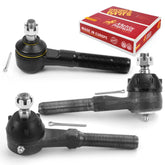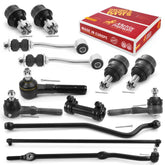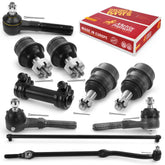Winter Weather Driving Tips
Winter weather can have a significant impact on the condition of roads and the safety of driving. Snow, ice, and freezing temperatures can all make it more difficult to drive and increase the risk of accidents. To help ensure safe winter driving, it's important to understand how the weather can affect roads and to take appropriate precautions.
How Winter Weather Affects Roads
One of the most obvious ways that winter weather can impact roads is through the accumulation of snow and ice. Snow can make roads slippery and difficult to navigate, especially if it's not properly cleared. In addition to causing slippery conditions, snow can also reduce visibility, making it harder to see other vehicles and obstacles on the road.
Black Ice
Ice is another major concern for winter driving. When water on the road freezes, it can create a thin layer of ice that can be very slippery and difficult to see which is called the black ice. Black ice is especially dangerous because it's often transparent and difficult to spot until it's too late. Even a thin layer of ice can cause a car to lose traction and slide out of control.
How Winter Affects Driving
In addition to the direct effects of snow and ice on the road, winter weather can also cause other problems that can impact driving. For example, freezing temperatures can cause potholes to form in the road, creating rough, uneven surfaces that can damage a car's tires and suspension. Cold weather can also cause damage to road signs and other infrastructure, making it harder to navigate and stay informed about traffic conditions.
Winter Weather Driving Tips
To help ensure safe winter driving, it's important to take a few precautions:
- Check the weather forecast before you set out on a trip. If the forecast calls for snow, ice, or freezing temperatures, consider whether it's necessary to make the trip at all. If you do need to travel, be sure to allow extra time to get to your destination so you can drive slowly and cautiously.
- Make sure your car is properly equipped for winter weather. This includes having winter tires, which are designed to provide better traction on snow and ice, as well as making sure your car has plenty of antifreeze and that all your fluid levels are topped up. It's also a good idea to keep an emergency kit in your car that includes blankets, a flashlight, and other supplies in case you get stranded.
- Slow down and be extra cautious when driving in winter weather. Snow and ice can make roads slippery, and it takes longer to stop or change direction on a slippery surface. Allow extra space between your car and the one in front of you to give yourself more time to react to any hazards that may arise.
- Use your headlights and turn signals to help other drivers see you. In low visibility conditions, it's important to be extra visible to other drivers to help prevent accidents.
- Stay alert and pay attention to the road. Winter weather can be unpredictable, and it's important to be prepared for anything. Keep a watchful eye out for other vehicles, pedestrians, and any potential hazards on the road.
- Don't use cruise control on slippery roads. If your tires lose traction, the cruise control will not allow you to slow down as quickly as you need to.
- Avoid sudden movements and braking. Sudden movements and braking can cause your vehicle to skid on slippery roads.
- Know how to handle a skid. If your vehicle starts to skid, take your foot off the accelerator and steer in the direction you want the front of the vehicle to go.
- Use low gears when driving uphill: If you're driving a manual transmission, use a lower gear when driving uphill in the snow. This will help give your tires more traction and make it easier to climb the hill.
- Prepare an emergency kit: It's always a good idea to keep an emergency kit in your vehicle, but it's especially important in the winter. Your kit should include a blanket, flashlight, extra batteries, a first-aid kit, and any other supplies you might need in case you get stranded in your vehicle.
By following these tips and being mindful of the impact that winter weather can have on roads, you can help ensure a safe and enjoyable winter driving experience.
Prepare the Suspension
Snow and ice can also have an impact on a car's steering and suspension system. When driving on snowy or icy roads, the car's wheels may have less traction and may be more prone to slipping. This can put extra strain on the steering and suspension system, and may cause components to wear out more quickly.
To help protect your car's steering and suspension system during the winter, it’s important to take care of any necessary maintenance and repairs. This may include things like replacing worn or damaged parts, and checking the fluid levels and condition of the steering and suspension system. It’s also a good idea to use winter tires, which are designed to provide better traction on snowy and icy roads.
Overall, winter weather can have a variety of effects on a car's steering and suspension system. To help protect your car and ensure that it performs well in winter weather, it’s important to keep it well-maintained and to take appropriate precautions when driving in cold temperatures and on slippery roads.
Deteriorating Car Battery
The winter season and car batteries are not best friends. One of the only weaknesses of a lead-acid battery is the cold weather, especially if the battery is more than three years old. But since you know this, you can take preventive measures to save yourself from calling roadside assistance.
Consider switching to more advanced lithium batteries if you have lead-acid batteries in your vehicle. The new kind does not need regular maintenance and performs much better in colder weather than its counterpart.
By following simple winter driving tips, you can help ensure your safety on the roads this winter. Remember to take it slow, stay alert, and be prepared for the challenges that winter weather can bring.









